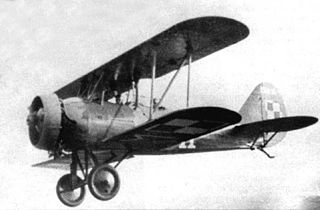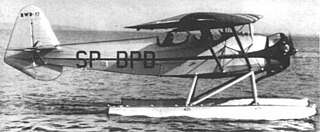 W
WThe Bartel BM 6 was a Polish biplane trainer fighter aircraft of 1930. It did not advance beyond the prototype stage.
 W
WThe Lublin R-XIII was the Polish army cooperation plane, designed in the early-1930s in the Plage i Laśkiewicz factory in Lublin. It was the main army cooperation plane in the Invasion of Poland. Its variant Lublin R-XIV was a military trainer aircraft.
 W
WThe Nikol A-2 was a small, amphibious aircraft designed and built in Poland in the 1930s. Only one was completed before World War II.
 W
WThe PWS-16 was a biplane trainer designed and developed by Podlaska Wytwórnia Samolotów (PWS). An armed variant also entered production as the PWS-26.
 W
WThe PWS-18 was a Polish trainer aircraft, used from 1937 to 1939 by the Polish Air Force, a modified licence variant of the British Avro Tutor.
 W
WThe PWS-26 was a Polish advanced training aircraft, used from 1937 to 1939 by the Polish Air Force, constructed in the PWS. It was the second most numerous Polish pre-war aircraft, after the RWD-8.
 W
WThe PWS-33 Wyżeł was a Polish twin-engined military trainer aircraft from a period before World War II constructed by Podlaska Wytwórnia Samolotów or PWS. Although destined for production it got no further than the prototypes before Poland was invaded.
 W
WThe RWD 8 was a Polish parasol wing monoplane trainer aircraft produced by RWD. It was used from 1934 to 1939 by the Polish Air Force and civilian aviation.
 W
WThe RWD 17 was a Polish aerobatics-trainer aircraft of 1937, parasol wing monoplane, constructed by the RWD team.